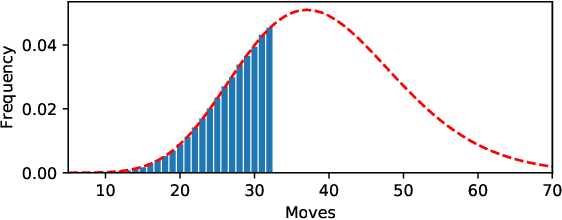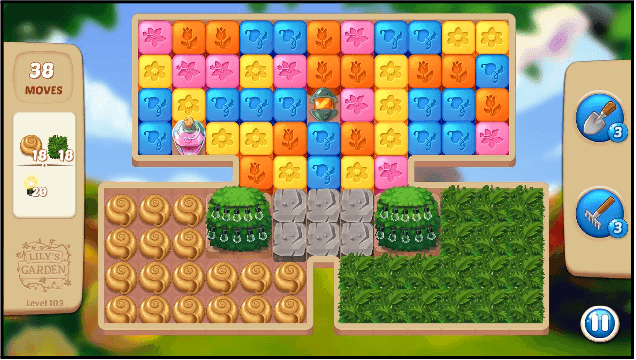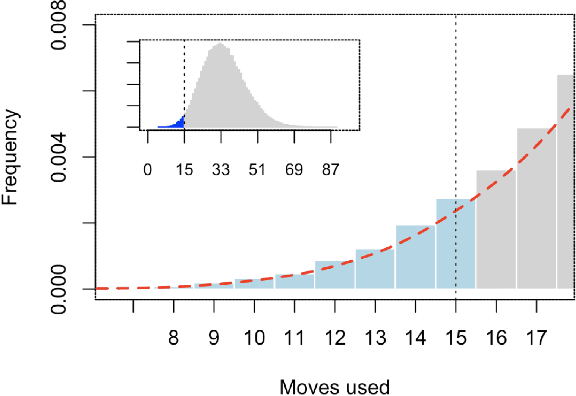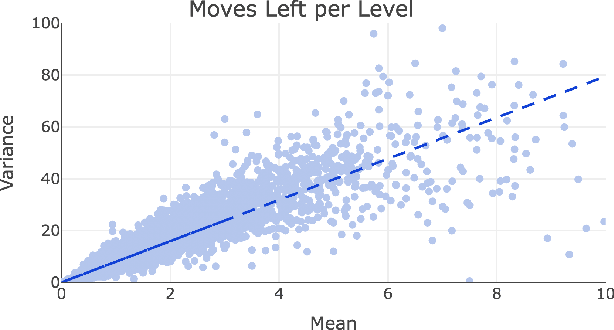Arturo Valdivia
Estimating player completion rate in mobile puzzle games using reinforcement learning
Jun 26, 2023



Abstract:In this work we investigate whether it is plausible to use the performance of a reinforcement learning (RL) agent to estimate the difficulty measured as the player completion rate of different levels in the mobile puzzle game Lily's Garden.For this purpose we train an RL agent and measure the number of moves required to complete a level. This is then compared to the level completion rate of a large sample of real players.We find that the strongest predictor of player completion rate for a level is the number of moves taken to complete a level of the ~5% best runs of the agent on a given level. A very interesting observation is that, while in absolute terms, the agent is unable to reach human-level performance across all levels, the differences in terms of behaviour between levels are highly correlated to the differences in human behaviour. Thus, despite performing sub-par, it is still possible to use the performance of the agent to estimate, and perhaps further model, player metrics.
Statistical Modelling of Level Difficulty in Puzzle Games
Jul 08, 2021



Abstract:Successful and accurate modelling of level difficulty is a fundamental component of the operationalisation of player experience as difficulty is one of the most important and commonly used signals for content design and adaptation. In games that feature intermediate milestones, such as completable areas or levels, difficulty is often defined by the probability of completion or completion rate; however, this operationalisation is limited in that it does not describe the behaviour of the player within the area. In this research work, we formalise a model of level difficulty for puzzle games that goes beyond the classical probability of success. We accomplish this by describing the distribution of actions performed within a game level using a parametric statistical model thus creating a richer descriptor of difficulty. The model is fitted and evaluated on a dataset collected from the game Lily's Garden by Tactile Games, and the results of the evaluation show that the it is able to describe and explain difficulty in a vast majority of the levels.
 Add to Chrome
Add to Chrome Add to Firefox
Add to Firefox Add to Edge
Add to Edge